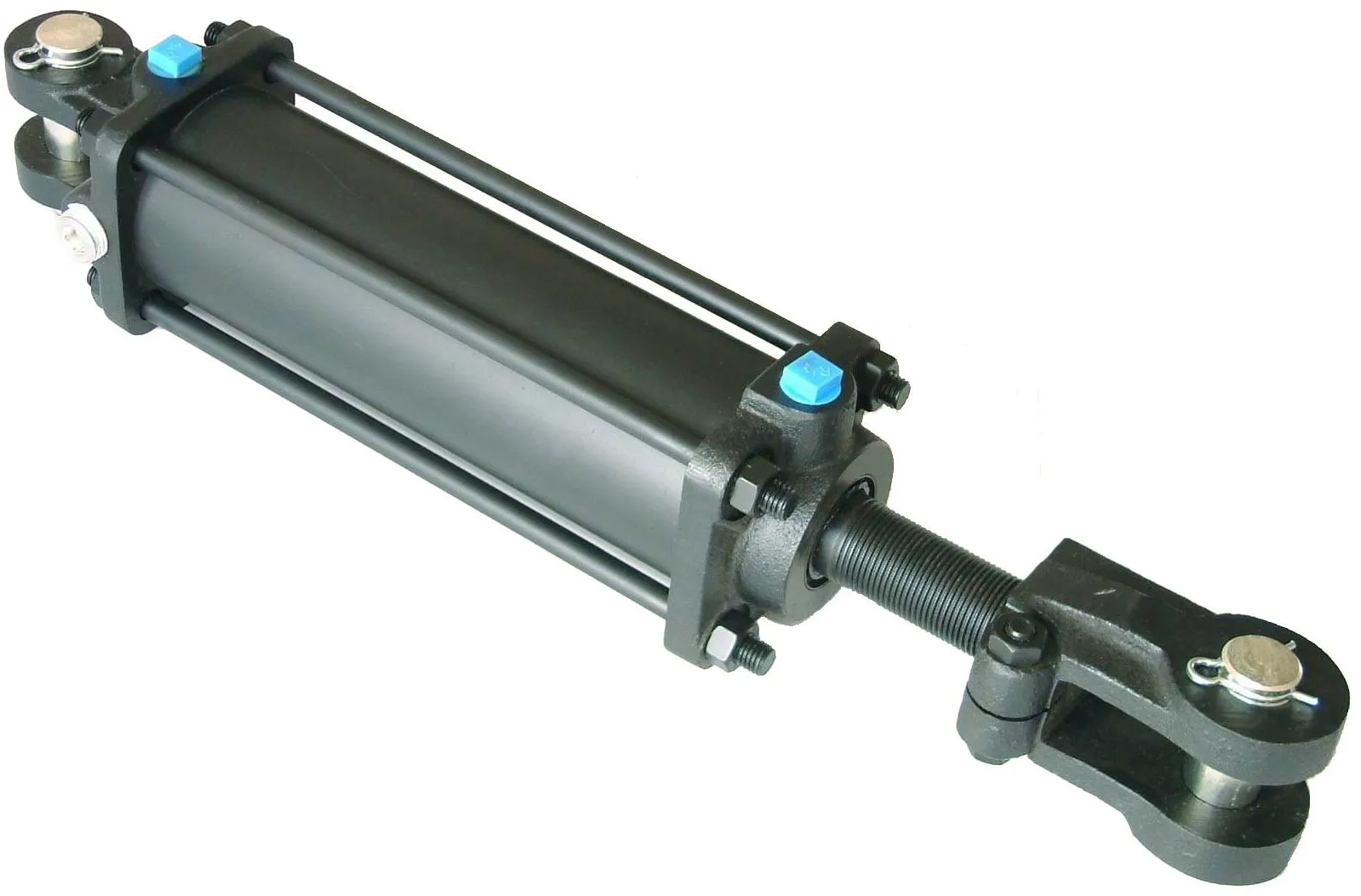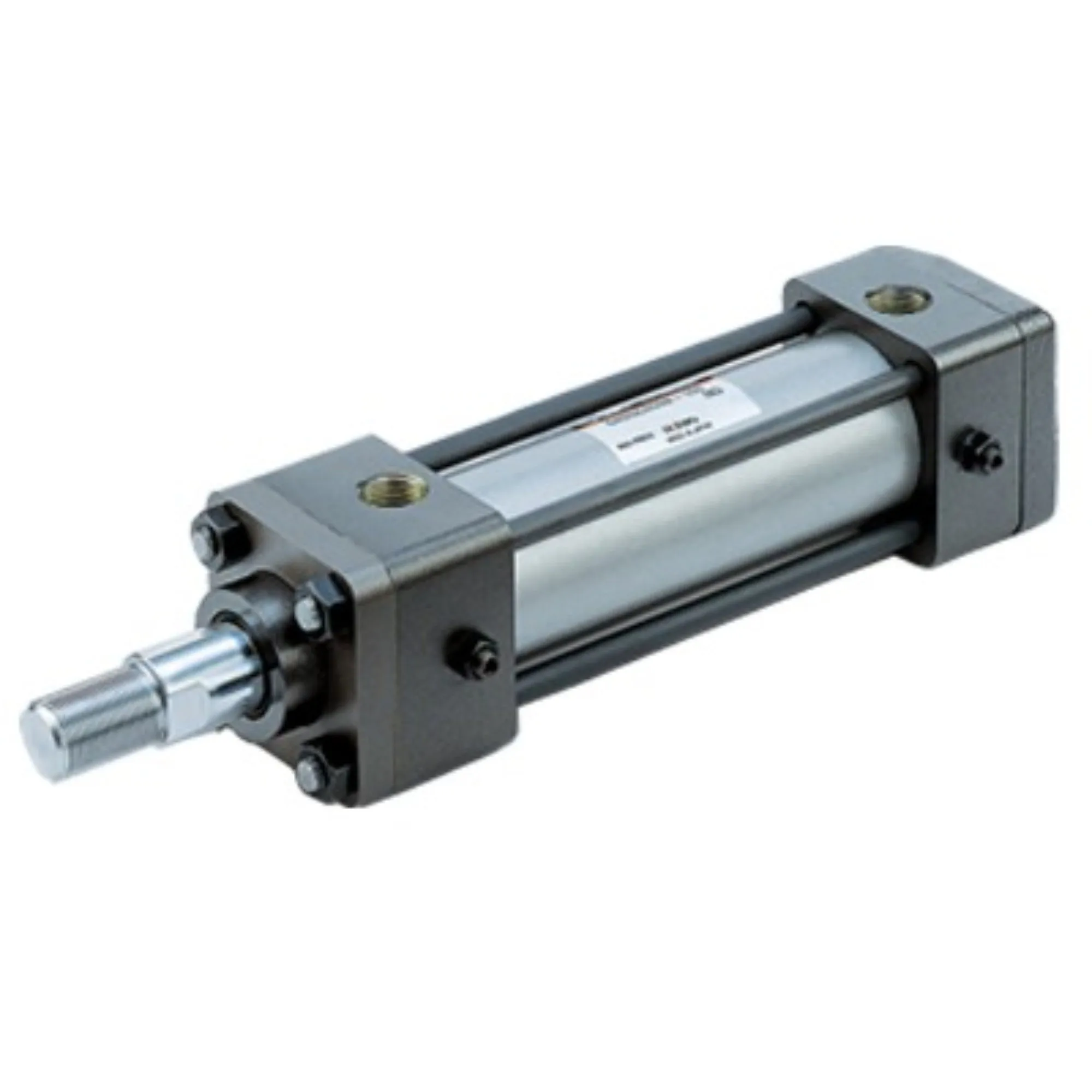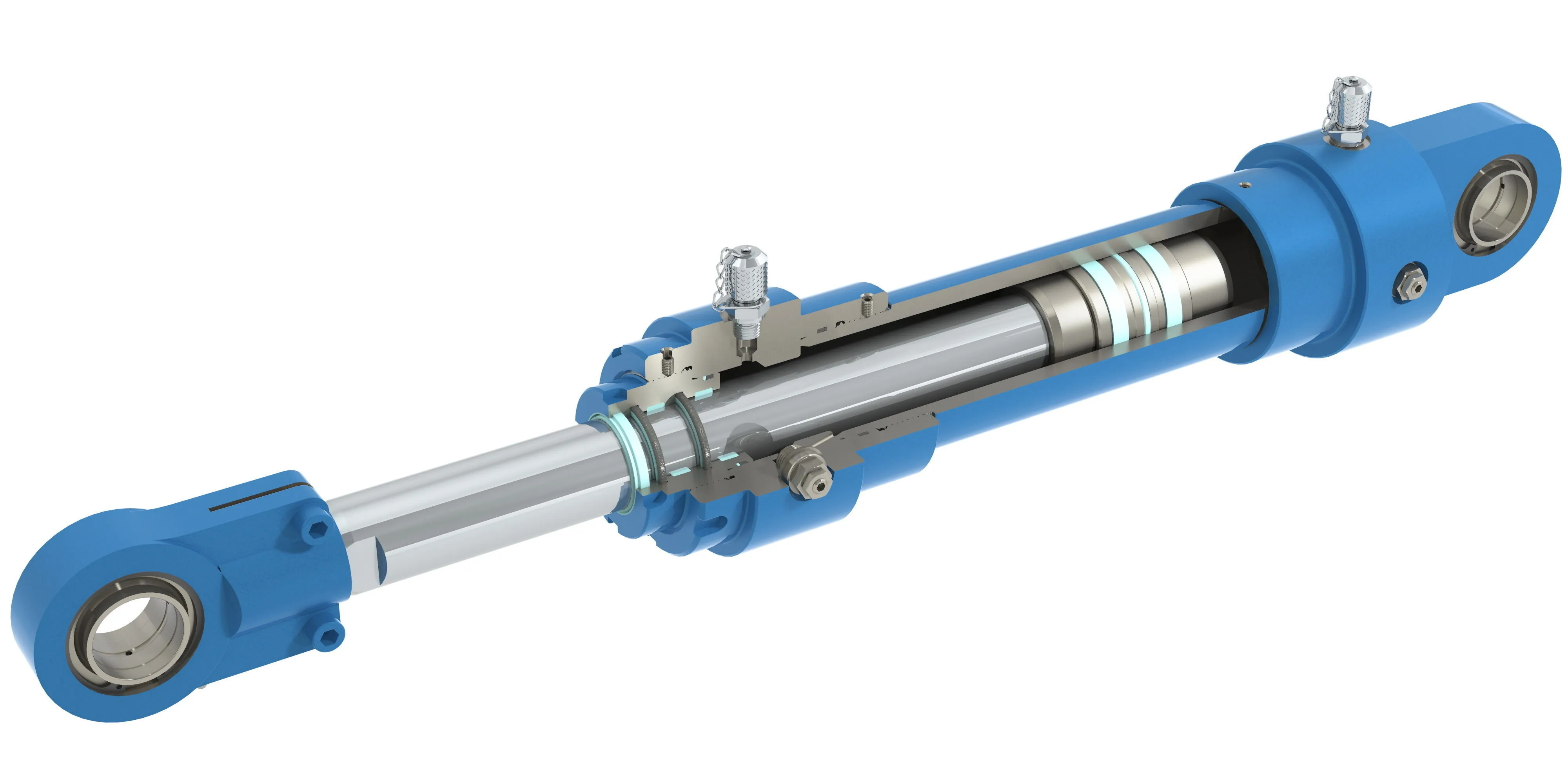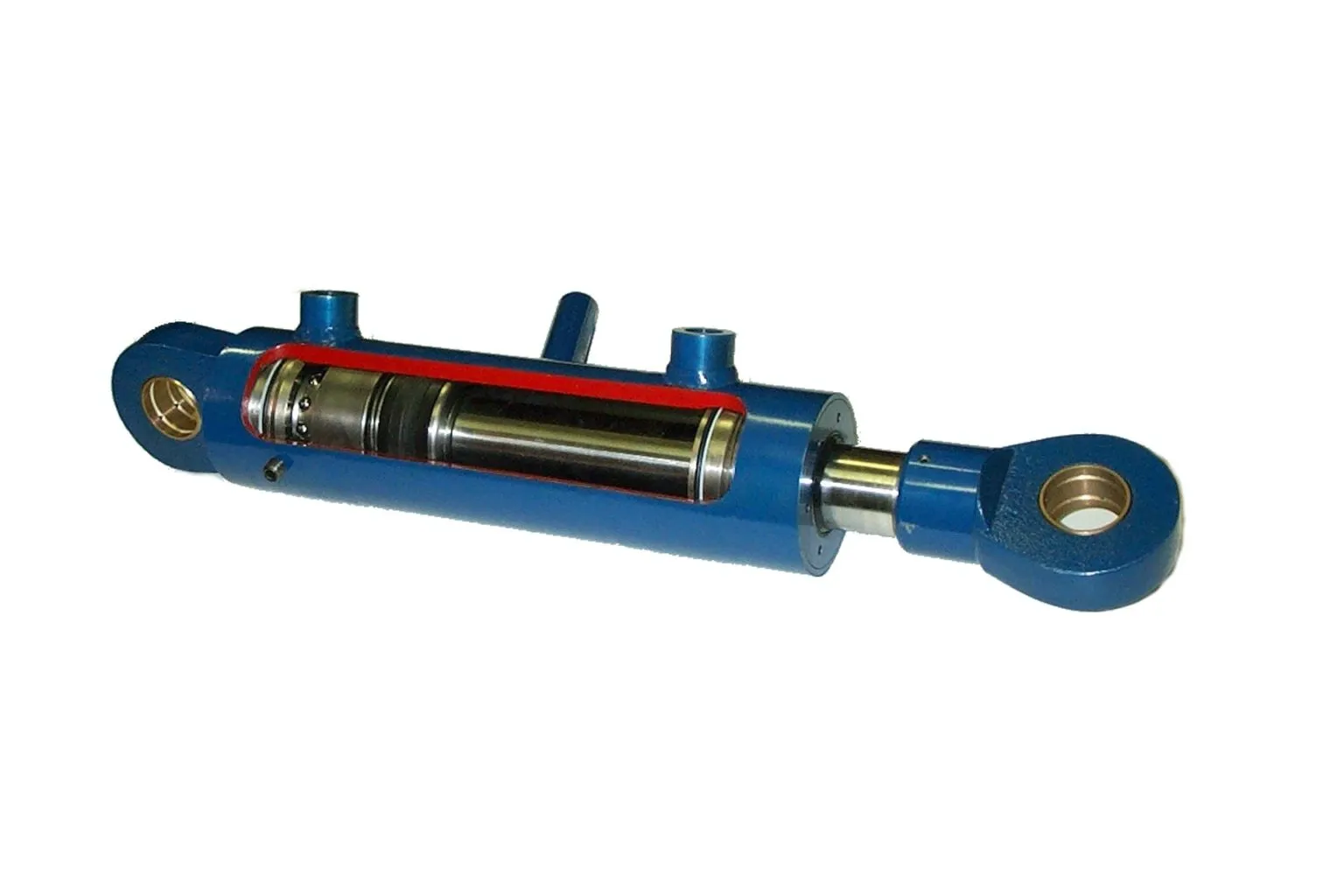Exploring Mill-Type Welded Hydraulic Cylinders: A Comprehensive Guide
Introduction to Mill-Type Welded Hydraulic Cylinders
In the realm of hydraulic systems, mill-type welded hydraulic cylinders play a vital role in ensuring efficient and reliable operation. These hydraulic cylinders are specifically designed to withstand high pressure and heavy loads, making them ideal for a wide range of industrial applications.
Definition and Summary
Mill-type welded hydraulic cylinders are robust hydraulic actuators that feature a welded construction, typically used in heavy-duty industrial machinery and equipment. These cylinders are designed to provide high load capacity and long stroke capabilities, making them essential components in various hydraulic systems.
Principle and Application
The principle behind mill-type welded hydraulic cylinders lies in their ability to convert fluid power into linear mechanical motion. They play a crucial role in controlling the movement of heavy machinery, ensuring precise and efficient operation in industries such as construction, mining, and material handling.
Design Characteristics of Mill-Type Welded Hydraulic Cylinders

When it comes to the design of mill-type welded hydraulic cylinders, several key components must be considered to ensure optimal performance and durability.
Shell Design
The outer shell of the hydraulic cylinder must be robust and capable of withstanding high pressure levels without deformation. It is often made of high-strength steel to ensure structural integrity.
Inner Cylinder and Piston
The inner cylinder houses the piston assembly, which moves back and forth within the cylinder to generate linear motion. Both components must be precision-engineered to ensure smooth operation and minimal friction.
Welding Technology
The welding technology used in manufacturing mill-type welded hydraulic cylinders is critical to their overall strength and performance. High-quality welding techniques are employed to create durable and leak-free cylinder components.
Working Principle of Mill-Type Welded Hydraulic Cylinders
The working principle of mill-type welded hydraulic cylinders involves the transfer of hydraulic pressure to the piston, which in turn generates linear motion. This mechanism allows for precise control of heavy loads and machinery in various industrial applications.
Types and Configurations of Mill-Type Welded Hydraulic Cylinders
There are three main types of mill-type welded hydraulic cylinders available, each with unique configurations to suit different operating requirements.
Single-Acting Cylinders
Single-acting mill-type welded hydraulic cylinders operate in one direction, using hydraulic fluid to extend the piston rod. They are commonly used in applications where a single directional force is required.
Double-Acting Cylinders
Double-acting mill-type welded hydraulic cylinders can move in both directions, providing precise control over the movement of heavy machinery. They are versatile and widely used in various industrial settings.
Telescopic Cylinders

Telescopic mill-type welded hydraulic cylinders feature multiple stages that can extend and retract, offering greater stroke lengths and operational flexibility. They are ideal for applications requiring variable extension capabilities.
Advantages of Mill-Type Welded Hydraulic Cylinders
Mill-type welded hydraulic cylinders offer several advantages that make them essential components in industrial hydraulic systems.
High Load Capacity
These cylinders are designed to withstand heavy loads and high pressure levels, making them ideal for demanding applications in industries such as construction and mining.
Long Stroke
Mill-type welded hydraulic cylinders provide extended stroke lengths, allowing for precise control over the movement of machinery and equipment.
Rugged Durability
With their robust construction and high-quality materials, these cylinders are built to last in harsh industrial environments, ensuring long-term reliability and performance.
Performance Characteristics of Mill-Type Welded Hydraulic Cylinders
Understanding the performance characteristics of mill-type welded hydraulic cylinders is crucial for selecting the right cylinder size and configuration for specific applications.
Working Pressure and Range
Mill-type welded hydraulic cylinders typically operate at high working pressures, ranging from hundreds to thousands of psi, depending on the application requirements.
Load Capacity and Responsiveness
Factors such as cylinder size, design, and hydraulic fluid properties can affect the load capacity and responsiveness of mill-type welded hydraulic cylinders, influencing their overall performance.
Selection Considerations
When choosing a mill-type welded hydraulic cylinder, factors such as application requirements, operating conditions, and environmental factors should be considered to ensure optimal performance and longevity.
Applications of Mill-Type Welded Hydraulic Cylinders
Mill-type welded hydraulic cylinders are widely used across various industries, including heavy equipment, industrial machinery, mining operations, and more.
Heavy Equipment
In heavy equipment applications, mill-type welded hydraulic cylinders are used in construction machinery, agricultural equipment, and other heavy-duty vehicles to control movement and provide precise force transmission.
Industrial Machinery
Industrial machinery relies on mill-type welded hydraulic cylinders for efficient operation, used in presses, machine tools, and automation systems to facilitate precise motion control and positioning.
Mining Operations
In mining operations, mill-type welded hydraulic cylinders play a critical role in excavators, dump trucks, and drilling equipment, providing reliable force and motion control in challenging environments.
Design Considerations and Selection Criteria
When selecting a mill-type welded hydraulic cylinder, several design considerations and selection criteria must be taken into account to ensure optimal performance and reliability.
Bearing Capacity
The bearing capacity of the hydraulic cylinder determines its ability to withstand heavy loads and pressure levels, impacting its overall performance in industrial applications.
Sealing and Durability
The sealing system of the cylinder must be robust and reliable to prevent leakage and ensure long-term durability, requiring high-quality seals and materials for optimal performance.
Safety and Maintenance
Ensuring the safety and maintainability of mill-type welded hydraulic cylinders is essential for their continued operation, requiring regular inspection, maintenance, and adherence to safety standards.

Sealing and Lubrication of Mill-Type Welded Hydraulic Cylinders
Proper sealing and lubrication are crucial for the performance and longevity of mill-type welded hydraulic cylinders, ensuring smooth operation and minimal wear over time.
Sealing Materials
Utilizing high-quality seals such as piston seals, rod seals, and wear-resistant materials is essential for preventing leakage and maintaining optimal performance in hydraulic cylinders.
Lubrication Requirements
Regularly filling the hydraulic cylinder with the appropriate amount of hydraulic oil is necessary to lubricate internal components, reducing friction and wear for extended service life.
Regular Inspection and Preventive Maintenance
Implementing regular inspection and preventive maintenance measures is essential for ensuring the continued performance and reliability of mill-type welded hydraulic cylinders.
Inspection Procedures
Regularly inspecting hydraulic cylinders for signs of wear, leakage, or damage can help identify potential issues early on, preventing costly repairs and downtime in industrial applications.
Maintenance Practices
Performing routine maintenance tasks such as seal replacement, lubrication, and calibration inspections is crucial for optimizing the performance and longevity of mill-type welded hydraulic cylinders.
Installation Guide for Mill-Type Welded Hydraulic Cylinders
Proper installation of mill-type welded hydraulic cylinders is essential for ensuring their optimal performance and longevity in industrial applications.
When installing a hydraulic cylinder, ensure that it is securely mounted, aligned correctly, and connected to the hydraulic system according to the manufacturer’s specifications for safe and efficient operation.
Maintenance Tasks for Mill-Type Welded Hydraulic Cylinders
Implementing regular maintenance tasks is essential for maximizing the service life and performance of mill-type welded hydraulic cylinders.
Regular Inspection
Regularly inspecting hydraulic cylinders for wear, leakage, and damage can help identify potential issues early on, allowing for timely repairs and preventing costly downtime.
Proper Lubrication
Ensuring that hydraulic cylinders are properly lubricated with the correct amount of hydraulic oil is essential for reducing friction and wear, maintaining optimal performance over time.
Seal Replacement and Calibration
Replacing worn seals and calibrating hydraulic cylinders as needed can help maintain their performance and prevent leakage, ensuring efficient operation in industrial applications.
Safety Considerations and Environmental Factors
Considering safety measures and environmental factors is crucial when using mill-type welded hydraulic cylinders to ensure the well-being of personnel and compliance with regulatory standards.
Adhering to safety guidelines, providing proper training for operators, and implementing safety devices are essential to prevent accidents and ensure safe operation in industrial settings.
Fault Diagnosis and Common Problems
Diagnosing faults and addressing common problems with mill-type welded hydraulic cylinders is essential for maintaining their performance and reliability in industrial applications.
Common issues such as leakage, seal wear, and piston rod damage can be diagnosed through thorough inspection and testing, allowing for timely repairs and preventative measures to prevent future problems.
Frequently Asked Questions
Here are answers to some common questions about mill-type welded hydraulic cylinders:
What are the advantages of mill-type welded hydraulic cylinders?
Mill-type welded hydraulic cylinders offer high load capacity, long stroke capabilities, and rugged durability, making them ideal for heavy-duty industrial applications where precision and reliability are essential.
What are the main components of a mill-type welded hydraulic cylinder?
The main components of a mill-type welded hydraulic cylinder include the outer shell, inner cylinder, piston assembly, seals, and hydraulic connections, all of which work together to convert fluid power into linear motion.
How do mill-type welded hydraulic cylinders differ from other types?
Mill-type welded hydraulic cylinders feature a robust welded construction and are specifically designed for high-pressure and heavy-load applications, providing superior performance and durability compared to other types of hydraulic cylinders.

What maintenance is required for mill-type welded hydraulic cylinders?
Maintenance tasks for mill-type welded hydraulic cylinders include regular inspection, seal replacement, proper lubrication, and calibration checks to ensure optimal performance and longevity in industrial applications.
Long Tail Keywords for Mill-Type Welded Hydraulic Cylinder
Here are three long tail keywords related to mill-type welded hydraulic cylinders:
1. “High-Performance Mill-Type Welded Hydraulic Cylinder”
2. “Durable Mill-Type Welded Hydraulic Cylinder Design”
3. “Efficient Mill-Type Welded Hydraulic Cylinder Operation”
Our Company: Leading Hydraulic Cylinder Manufacturer
We are a renowned hydraulic cylinder replacement manufacturer, offering a comprehensive product line to meet the diverse needs of our customers. With a strong focus on quality and innovation, we have established ourselves as a leading provider of hydraulic cylinders in both domestic and international markets.
Our company prides itself on professional expertise, international certifications, customized services, state-of-the-art production equipment, and dedicated after-sales support to ensure customer satisfaction and success in various industries.
Author: lyl
